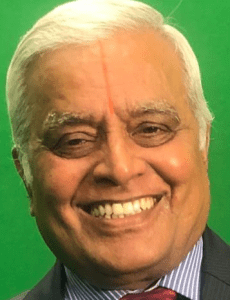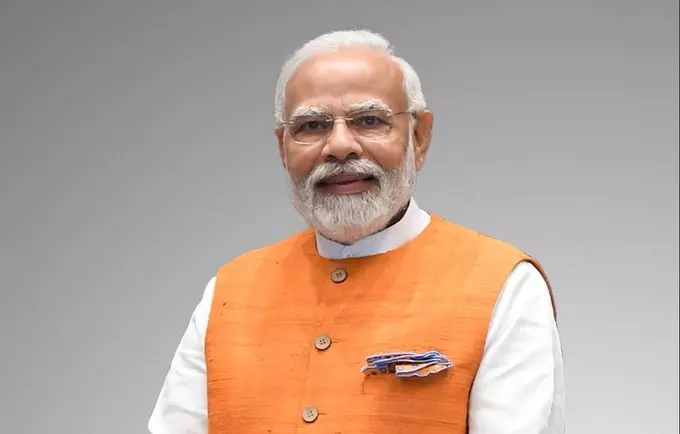
Modi may declare early Diwali for middle class in 2023 Budget
The Federal gives you the lowdown on what is expected in Budget 2023-24, preparations that go into documenting it and how it is guarded inside the confines of North Block until presented on the D-Day

Prime Minister Narendra Modi’s pre-election year Budget is likely to find ways to cheer up the middle class, especially working women. It will also focus on healthcare and education.
Finance Minister Nirmala Sitharaman is toying with the idea of providing a 15 per cent work-from-home or WFH-allowance to central government women employees in her fifth Union Budget on February 1. This is her way of rewarding women who had to endure additional pressure during the pandemic.
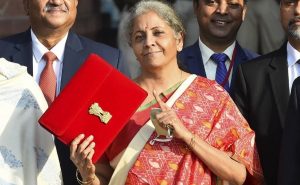
Sitharaman’s 2022 Budget speech lasted one-and-half hours, though it was the 2021 speech that went on for two hours and 40 minutes, creating a record of sorts in India’s Budget history. How long the Budget on February 1 will be, is a matter of speculation. The average length of a Budget presentation otherwise has ranged between one-and-half and two hours.
Focus on middle class
A day before the Budget, Sitharaman will table the Economic Survey in Parliament. The survey is an annual report that encapsulates the macro-economic changes in fiscal 2022. While giving a sort of economic report card it also presents an outlook for the new financial year.
There is much anticipation among the taxpayers and they are hopeful that Union Budget 2023-24 would be beneficial to them. The government on the other hand, will focus on how it could derive potential economic benefits. Indications from the Finance Ministry suggests that the Budget is likely to focus on middle class voters.
Also read: Modi meets leading economists ahead of Union Budget
This is the fifth and last Union Budget of the Modi government before the 2024 Parliamentary Elections. Though the Budget is supposed to be a mere statement of accounts, over the years it has become a policy statement and sometimes even a political document of ruling regimes. February 2024 will see a vote on account and not a full Budget as it will be an election year.
Sitharaman has had three rounds of discussions with the Prime Minister so far on the Budget proposals. The meetings were long, stretching to four or five hours, sometimes going upto 11 pm. She is being assisted by 25 IAS officers.
Sops for salaried class likely
Besides work-from-home allowance for women, the Budget is likely to rationalise and offer tax benefits to the salaried class. The reliefs are being planned as the budget comes after two-years of COVID and its devastating fallout.
Salaried employees expect the Budget to boost housing-rent allowance to accommodate WFH practices and compensate for the higher rentals they have to bear post COVID-19.
A raise in the standard deduction limit is likely either as a fixed increment or through introduction of a progressive standard deduction based on cumulative remuneration.
A total of 45,000 suggestions were received by the Finance Ministry, but only a few are likely to get implemented.
The salaried class anticipates long-term gains in healthcare, maternity and pension benefits provided by the government. And the government may address these concerns.
To incentivise savings and investments, the cap on Section 80C deduction (currently at ₹150,000) is likely to go up.
Flurry in North Block
In normal times a common man cannot enter the North Block that houses the Finance Ministry. The access is provided only to officials and visitors with appointments. A few months before the Budget, the North Block turns into a fortress with some of its areas declared out-of-bounds, even for officials who work in the building.
Also read: Budget may cap fiscal deficit at 5.8% for FY24, Centre’s borrowings likely to rise
Files marked ‘Top Secret’ are taken in wrapped envelopes. A joint secretary coordinates the massive exercise among the various nodal ministries and departments within the finance ministry.
Preserving budget secrecy
Each entry point of North Block is guarded by personnel of the Central Reserve Police Force. The building is always under CCTV surveillance and even the handful of rare visitors who are allowed inside are frisked.
Special entry passes are issued with photo-IDs stamped with signatures of officers above the rank of deputy secretary for security purposes.
Media banned
In normal times only correspondents accredited with the government are allowed entry provided they have prior appointments. Even that is stopped during Budget preparations.
Corporate liaison officials are shut-out at the main gate itself. Besides, a round-the-clock vigil is maintained in the corridors of the Finance Ministry on the first floor.
Computers are placed under surveillance of the Intelligence Bureau. Pen drives and bluetooth are banned. All internet connections are disconnected in the building and entries are registered in physical log books. Mobile phone jammers too are installed.
A scanner is kept at the four entry and exit points of the building to identify any external substance or materials that may be smuggled into the North Block. Intelligence officers oversee the operations.
Meet the number crunchers
The Finance Ministry has five departments which are headed by senior functionaries drawn from IAS, Economic Services and a pool of external economists.
The current Budget preparations are being steered by Ajay Seth, who is the Secretary of Economic Affairs.
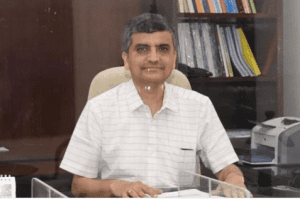
He is the senior-most officer in the ministry with overall responsibilities and he coordinates various departments. A 1987 batch Karnataka-cadre IAS officer, Seth is a key point person for the Budget. The Budget Division, which puts together all inputs and finalises the financial statement, is under him.
TV Somanathan, Secretary, Expenditure, is a Tamil Nadu cadre officer. Considered a ‘blue-eyed’ aide of Narendra Modi, he is affectionately addressed as ‘Soma’.
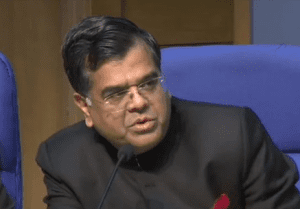
Somanathan served in the PMO before he was shifted to the Finance Ministry. He is also considered close to Nirmala Sitharaman.
Sanjay Malhotra, Secretary, Revenue, is a 1990-batch IAS officer from Rajasthan cadre and was recently shifted to the Revenue Department from the Department of Financial Services.
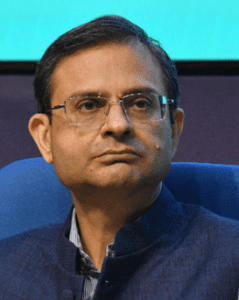
Luckily for him, the revenues have done well this year. But he faces the challenge of meeting the expectations of the states.
Also read: A feel-good Budget that skirts around some critical areas
Vivek Joshi, Secretary, Financial Services is a new face in the highest echelons of the finance ministry. He was appointed as secretary in the department in October 2019 in place of Sanjay Malhotra who moved to revenue.
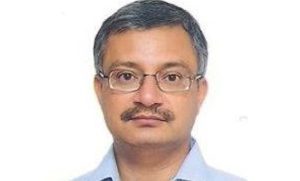
Tuhin Kanta Pandey, Secretary, Investment and Public Asset Management, is a 1987-batch IAS officer from Odisha cadre. He has the challenging task of ensuring higher disinvestment this year. He is, however, credited for playing a crucial role in the sale of Air India.
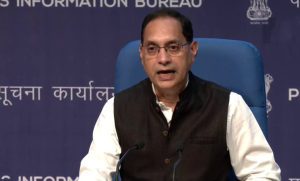
V Anantha Nageswaran, the Chief Economic Advisor, is the head of the Economic Division of the Department of Economic Affairs. Nageswaran has a PhD in Finance from the University of Massachusetts Amherst.
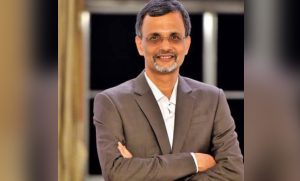
His main task is to present the Economic Survey and provide the economic rationale for the Budget. He has made a lateral entry from the corporate sector and would be watched closely for his performance as CEA, particularly because his predecessors have had difficult stints in the ministry.
Finally, Ashish Vachhani, Additional Secretary, Budget, too is a Tamil Nadu cadre IAS officer.

Where, when and how the Budget is printed?
Budget papers running into hundreds of pages are printed at the government press situated underground in the North Block. Due to the digital Budget introduced by Modi, the printing of the Budget papers has been reduced to 1,000 copies.
MPs are given copies of the e-Budget. It is uploaded on websites and mobile apps as soon as Sitharaman completes her speech.
The Union Budget is categorised as Grade One protection by the secret wing of the Intelligence Bureau. If any leak takes place, the government’s stability will be in crisis. Hence several security measures are adopted.
Also read: FM announces new development scheme ‘PM-DevINE’ for North East
The Intelligence Bureau (IB) has posted three senior officials at the printing press where the budget is printed. Strict measures are ensured so that even printing press employees may not be able to decipher what is being printed.
Arrangements are made in such a manner that even a Finance Ministry officer belonging to one division may not be able to meet an employee from another division. Underground paths are designated and movement controlled by intelligence officers to ensure that work is shared on a need-to-know basis and there is no interaction among the officials and employees.
When quarantine kicks in
Finance Ministry employees engaged in Budget work have to remain in the office premises for days together until February 1. They cannot make or get phone calls. In any emergency, their families can call a particular number. Food is taken inside, and so is everything else. Till the Budget is presented on February 1, there shall be no exit from the printing press. A big iron door separates the main entry. Papers getting into the press are handed over in a sealed trunk box.
Halwa Party on January 20
In an annual ritual that aims at cheering up the Finance Ministry officials, who are, for days, kept in isolation and prevented from socialising, Finance Minister Nirmala Sitharaman will host a ‘Halwa Party’ on January 20. The minister will reach the printing press and serve hot halwa from the oven to officials.
How are Budget papers dispatched?
Sniffer dogs are brought into the quarantined area of the printing press. They escort the Budget papers after sniffing them, to the main gates. This practice was introduced in 2015 to save time. Earlier it was a usual practice to bring the dogs to the courtyard of the Parliament and one could see the expert canines sniffing the boxes and sacks full of Budget papers before they enter the august halls of the building.
Four trucks of CRPF with a Commandant escorting the Budget papers will be dispatched from the press from 09.45 am on February 1.
Also read: If virus deigns to retreat, Budget 2022-23 would foster growth recovery
The Union Cabinet will meet at Parliament House at 10 am. By then, the Budget papers should be delivered to the Dispatch Section of Parliament.
Fifty trained police personnel will take the Budget bundles into Parliament. They will guard the sealed gunny bags containing Budget papers till, say, 1055 hours when the Finance Minister enters the Lok Sabha escorted by the Prime Minister. Once the Speaker allows the Finance Minister to stand up and read the Budget, history is made once again.


